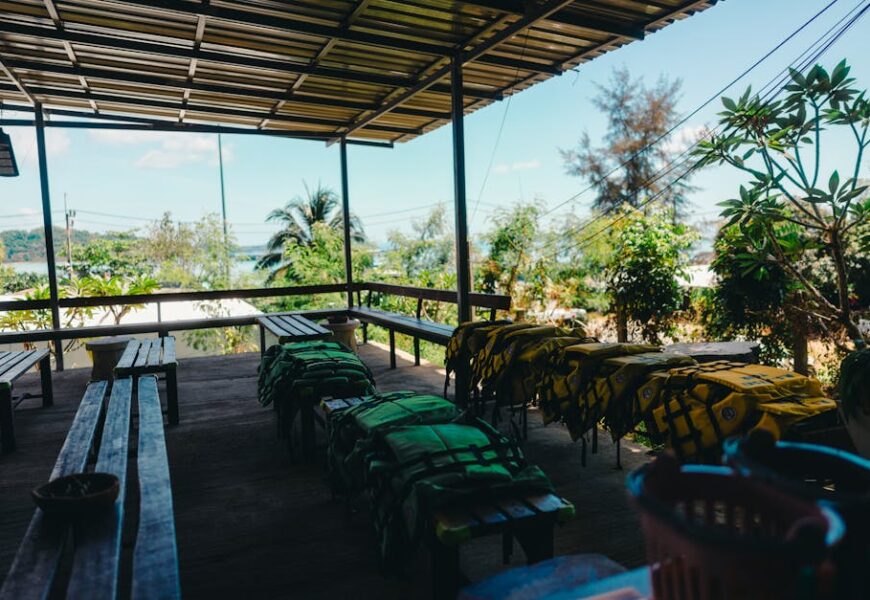Thailand’s red light districts represent a complex and controversial aspect of the country’s tourism landscape, deeply intertwined with socioeconomic realities and cultural dynamics. These areas, primarily located in major cities like Bangkok and Pattaya, have gained international notoriety for their adult entertainment scenes, attracting thousands of international visitors annually. While often sensationalized in media, these districts are multifaceted environments with profound social, economic, and human implications that extend far beyond simplistic stereotypes. Understanding these areas requires nuanced perspective, acknowledging both the systemic challenges and human experiences that shape their existence.
Historical Context and Social Dynamics
The emergence of Thailand’s red light districts can be traced back to complex historical factors, including economic marginalization, limited social mobility, and the aftermath of regional conflicts. During the Vietnam War era, areas like Patpong in Bangkok became prominent entertainment zones for military personnel, establishing foundational patterns of international sexual tourism. Poverty and limited economic opportunities in rural regions have historically driven individuals, particularly women and marginalized populations, into sex work as a survival strategy. This economic pressure creates intricate social dynamics where personal agency, economic necessity, and systemic inequalities intersect in profound ways.
Contemporary red light districts reflect ongoing socioeconomic challenges, representing both a survival mechanism and a controversial economic sector. While some view these areas through moral or exploitative lenses, the reality is far more nuanced, involving complex individual choices, economic constraints, and global economic disparities. Understanding these districts requires moving beyond simplistic judgments to recognize the human stories and systemic challenges underlying their existence.
Geographic Locations and Characteristics
Thailand’s most prominent red light districts are concentrated in specific urban areas, each with distinct characteristics and cultural atmospheres. Bangkok’s Patpong, located in the Silom area, represents a historically significant zone featuring go-go bars, nightclubs, and entertainment venues. Pattaya’s Walking Street offers another prominent example, featuring a concentrated stretch of adult entertainment establishments catering to international tourists. Nana Plaza in Bangkok and Soi Cowboy represent additional well-known locations, each presenting unique environments and social dynamics.
These districts are not monolithic spaces but diverse ecosystems with varying establishments, clientele, and operational structures. Some venues maintain more regulated environments with strict management protocols, while others operate with minimal oversight. The diversity reflects broader societal complexities, challenging simplistic narratives about these spaces and their participants. Understanding their geographic and social nuances requires moving beyond sensationalized perspectives to recognize the human experiences they encompass.
Legal and Regulatory Framework
Thailand’s legal approach to adult entertainment and sex work remains complex and often ambiguous. Technically, prostitution is illegal in Thailand, yet enforcement remains inconsistent and selective. Numerous establishments operate in quasi-legal spaces, existing through informal arrangements and complex bureaucratic negotiations. Local authorities often adopt pragmatic approaches, balancing regulatory requirements with economic considerations and tourism dynamics.
The regulatory landscape involves intricate negotiations between local governments, law enforcement, business owners, and economic interests. While official policies prohibit explicit sexual commerce, practical implementations reveal far more nuanced approaches. This complexity reflects broader societal tensions between legal frameworks, economic realities, and cultural practices. Understanding these dynamics requires recognizing the multifaceted nature of regulation in Thailand’s adult entertainment sectors.
Economic and Social Implications
Red light districts represent significant economic ecosystems, generating substantial revenue through tourism, entertainment, and associated industries. These areas contribute millions of dollars annually to local economies, supporting numerous indirect economic activities beyond direct entertainment services. However, this economic contribution coexists with profound social challenges, including potential exploitation, human trafficking risks, and systemic inequalities.
The economic significance extends beyond immediate financial transactions, encompassing broader tourism infrastructure, hospitality services, and local employment opportunities. Yet, these economic benefits must be critically examined alongside potential human costs and social vulnerabilities. Responsible engagement requires acknowledging both economic contributions and potential ethical challenges inherent in these environments.
Safety and Traveler Considerations
For international travelers, navigating Thailand’s red light districts requires careful consideration of personal safety, legal boundaries, and ethical implications. Visitors should maintain heightened awareness, practice standard safety protocols, and respect local cultural norms. Understanding local legal frameworks, potential risks, and appropriate behavioral expectations becomes crucial for responsible engagement. Travelers must recognize that these spaces involve real human experiences beyond tourist entertainment.
Practical safety recommendations include maintaining situational awareness, avoiding excessive alcohol consumption, protecting personal belongings, and respecting individual boundaries. Travelers should approach these environments with cultural sensitivity, recognizing the complex human dynamics underlying their existence. Responsible engagement involves moving beyond exploitative perspectives to acknowledge the humanity of all individuals involved.
Conclusion
Thailand’s red light districts represent far more than simplistic entertainment zones; they are complex social landscapes reflecting profound economic, cultural, and human dynamics. Understanding these environments requires moving beyond sensationalized narratives to recognize the nuanced realities of individual experiences, systemic challenges, and societal complexities. Responsible engagement demands empathy, critical understanding, and recognition of the human stories underlying these controversial spaces. As global conversations about economic inequality, human rights, and social justice continue evolving, these districts offer critical insights into broader social transformations.









